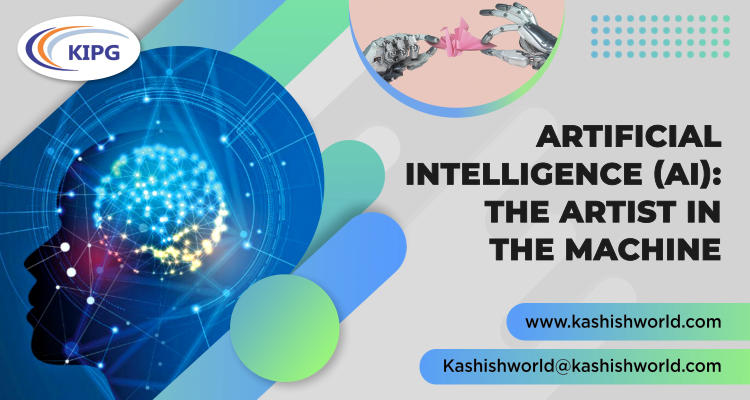
The concept of Artificial Intelligence (AI) is no more an alien subject matter. Within the past few years, AI programs and systems have witnessed a rapid evolution in their capacity to be creative, autonomous, and rational while depicting attributes of self-learning, which are blurring the lines between original works, which are products of a human intellect capable of Copyright Protection and mere computer-generated works. The same has come out as a challenge for conventional Intellectual Property (IP) laws internationally and is, therefore, raising several legal implications and ambiguities regarding ownership, authorship, and accountability in AI-generated works.
Uncovering Artificial Intelligence
The development of AI has been contributed by multiple disciplines like computer science, psychology, philosophy, sociology, mathematics, biology, and neuron science. AI is basically a machine or program, which is equipped with human-like intelligence to act in a human-like fashion and exhibit human capabilities. As per the World Intellectual Property Organization (WIPO), AI can be classified as:
- Expert Systems: The systems that are associated with subject matters that require a piece of in-depth knowledge and are inherently positive systems in nature are called expert AI systems; for example, AI used for medical diagnosis, AI that makes a recommendation on treatment, or the one that determines the geological conditions, to name a few. They are also used to produce artistic and creative works that require specialization.
- Perception Systems: These systems enable a computer to perceive the world with the sense of knowledge, sight, and hearing. These are generally used by topologists, word-context experts, etc.
- Natural Language Program/Systems: Such AI systems are meant to understand the meaning of words; therefore, they require a dictionary database. These systems take into consideration different grammatical and textual contexts to provide a semantic analysis.
How is AI a Creative Machine?
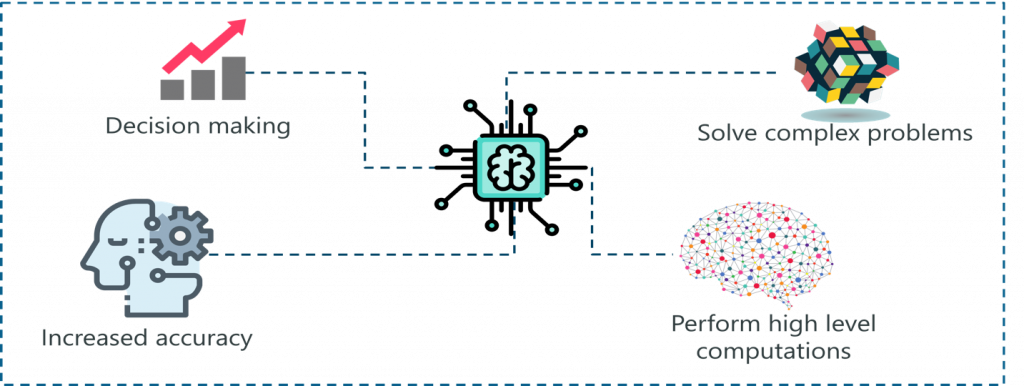
There is much debate about the attribution of authorship to AI programs – the reason being that they are capable of independent decision-making through learning from previous actions and constant feedback. Therefore, AI has exceeded the notion of it acting primarily as an intermediary. The following characteristic features make it a ‘creative’ system:
- Creative Output: AI may use the information made already available to it to learn from the same and produce outputs, but it may not necessarily produce previously generated works in a modified form. The work produced may also not qualify for ‘derivative works’ in all circumstances alike under the copyright regime since AI can make analysis and deduction and act on such a basis. Therefore, this is where the question of original authorship of works arises.
- Unsupervised Functioning: AI programs are capable of performing high-level tasks autonomously without supervision and external aid. Therefore, AI does not require the influence of human beings or their intervention to carry out their work.
- Unpredictable Action: There are many such instances where AI is capable of taking such a route of action, which is not previously perceived or imagined by a human. Therefore, its action is always not foreseeable. Consider the example of AlphaGo, which is a product of Google’s DeepMind. AlphaGo defeated Lee Sedol as a reigning world champion at ‘Go,’ an ancient Chinese game, with move 37, which is such a move that no human had ever previously contemplated.
- Adaptive Tendency: The AI program receives data input, and then it continues to process the same. It utilizes the feedbacks it gets and keeps improving the results with the help of such feedbacks, thereby not making the same mistakes and adapting acceptable behaviors.
- Efficient: Although a key feature of AI is that it is capable of acting with the like tendency of a human, it is rather capable of exceeding the said limit. It can process and analyze any amount of data with greater accuracy and efficiency than a normal human in lesser time.
- Result-Oriented: The AI-based systems are goal-oriented in the sense that they function as per the goals that they are to produce; for instance, story writing, drawings, etc.
Examples Displaying Creative Facets of AI

– Anna Ridler
- A visual artist named Anna Ridler used AI as an intermediary to create artwork. Much recently, through the help of the said AI, thousands of ‘imagined’ tulip varieties with unique characteristics were generated, which are now on display at an exhibition at the Barbican, London.
- In the previous year, Warner Music signed the first-ever record deal with an AI algorithm called the ‘Endell,‘which will be generating about 20 music albums.
- Another example is the AI system, commonly known as Creative Artificial Intelligence (CAI), which is used to create advertisements within a short frame of time by utilizing stock photographs from a database.
- The ‘Memories’ feature of the Apple smartphone in its Photos App is also a peculiar example.
- Also, Ai-Da, the world’s first robot artist, made a recent first and solo exhibition of her artwork.
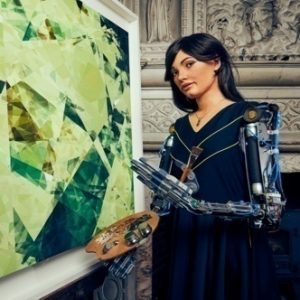
– Ai-Da and her artworks
What is the Standpoint of Different Countries with Respect to Creative Works by AI?
The common notion of authorship of copyright is based on the theory of personality and up until today, the attribution of personality has not extended up to machines. However, it would be interesting to note how different nations respond to the changes introduced by technology.
Germany: The German Copyright Law does not provide room for ambiguity as it clearly states that “works in this law are only individuals’ intellectual creations” (section 2). It limits the scope of copyright law to humans, and to provide for future contingencies, either a new and separate law would be needed; otherwise, there would be no extension of such rights to machines in general.
The United Kingdom: The United Kingdom’s Copyright, Designs, and Patent Act of 1988 provides that, “In case of literary, dramatic, musical, or artistic work which is computer-generated, the author shall be taken to be the person by whom the arrangements necessary for the creation of the work are undertaken.” Therefore, as per section 9, the computer-generated works through AI are protectable in favor of the human author only who makes the necessary arrangements to make the creation possible.
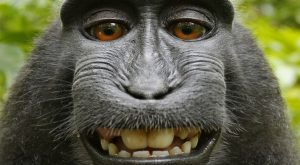
The United States of America: The US Copyright Office made a clear declaration stating that the works created by AI machines may not be protected. The analogy is often drawn from the Naruto case where the animal rights organization PETA advocated that the monkey should be given authorship rights for the photograph clicked by it. However, the court decided that non-human creatures cannot be granted such rights; and non-humans most certainly do include inanimate objects like software and programs. Also, the Patent Law specifies that an inventor can be an individual or set of individuals who invent or discover the subject matter of the invention, excluding non-living creatures from its ambit.
India: The Indian Copyright Law identifies the author as that person who caused the work to be created. Therefore, the question of attributing authorship to AI in India is ambiguous as per the legislative requirements since a person who “caused the work to be created” can be the programmer or creator of the AI or the financial investor, owner of the AI, or any other facilitator as well. Further ambiguity is brought in since authorship is granted to non-natural yet juristic persons like corporate companies, organizations, etc. Therefore, if AI systems are granted juristic personhood, they may be brought within the purview of the said Act.
Theoretically Understanding the Attribution of Authorship
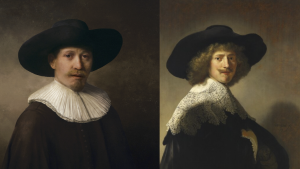
- A Machine as the Author: There may be a future contingency where personhood is granted to AI systems. In such an event, it would be beneficial to the existent legal system as it would solve the ambiguity concerning the authorship of persons who have not contributed to the creative process. The European Union commission is trying to amend laws to provide rights to machines or robots. The same will further the cause of the promotion of science and art as also enshrined in the US constitution. However, it may still leave certain questions unresolved since these rights are granted due to the rationale found in the Incentive Theory that states that it provides incentives to authors to create. AI needs no such incentive. The incentive is drawn out of human emotion, which AI cannot conceive. Also, providing the exclusive right to AI would mean undermining the rights as well as the time, money, and labor of those individuals who are a part of the creative process like the programmer, financers, etc. A better solution may lie in granting joint authorship of copyright after understanding the nature of the contribution of the human in the creative process. Since the creative process is complex as machine learning may take its own pace and multi-fold direction, it may or may not be comprehensible by mankind in real-time. Therefore, finding the right solution is probably still underway.
- A Programmer as the Author: Granting authorship of copyright in favor of the programmer would be the actual realization of the incentive theory since it is the programmer who builds the AI and gives it life and soul as well as direction. Without the labor of the programmer into the given equation, there would be no AI, which would also mean no creative output. Therefore, the programmer marks the starting point, and the AI-generated work marks the endpoint where AI may be seen as an intermediary, given that AI is used as a tool to facilitate the artwork. There have been a handful of case laws wherein the court decided in favor of the programmer, such as Nova Productions Ltd v Mazooma Games Ltd & Ors and Atari Inc. v North American Philips Consumer Elec. Corp.The cause of the dispute arises where the AI is autonomous, and the output of the AI is unsupervised. In such a scenario, the attribution of authorship in favor of the programmer would be unjustified. Also, the programmers will be rewarded twice if authorship rights are granted for the AI created and for the outputs that arise out of the AI-empowered program.
Concluding Remarks
It is evident how the prevailing legal framework lacks provisions to accommodate contemporary technical developments. In the given time, authorship of AI-generated works can be kept at bay by offering it to constitute a part of the public domain to benefit every end-user and paint the bigger picture wide. It will solve the problem of authorship since, in literal terms, the author is the AI, but as the law does not position AI as a juristic individual, the same is deemed to lie for the benefit of all without depriving the end-user of the content generated. Further developments will also influence how the law takes shape in the current scenario, which shall be interesting to observe in times to come.

